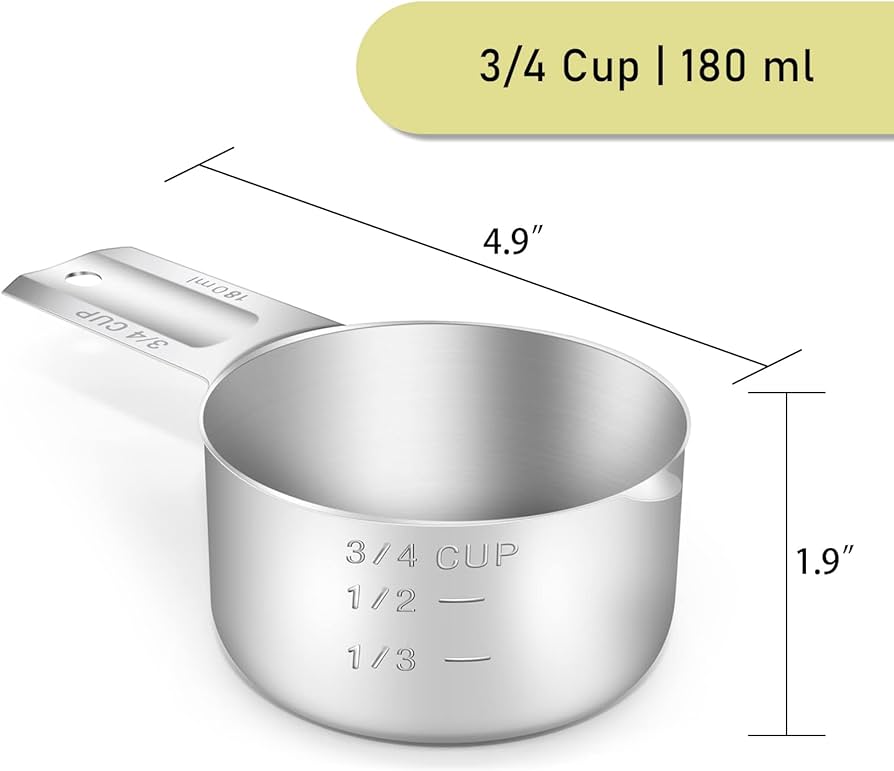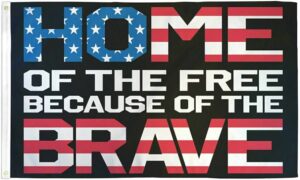Measurement Equivalents

Absolutely, here’s a breakdown of common measurement equivalents to help you with conversions:
Volume:
- 1 teaspoon (tsp) = 5 milliliters (ml)
- 1 tablespoon ( Tbsp ) = 3 teaspoons (tsp) = 15 milliliters (ml)
- 1 cup (c) = 16 tablespoons ( Tbsp ) = 240 milliliters (ml)
- 1 pint (pt) = 2 cups (c) = 480 milliliters (ml)
- 1 quart (qt) = 2 pints (pt) = 4 cups (c) = 960 milliliters (ml)
- 1 gallon (gal) = 4 quarts (qt) = 8 cups (c) = 3.785 liters (L)
Weight:
- 1 ounce (oz) = 28.35 grams (g)
- 1 pound (lb) = 16 ounces (oz) = 453.6 grams (g)
Length:
- 1 inch (in) = 2.54 centimeters (cm)
- 1 foot (ft) = 12 inches (in) = 30.48 centimeters (cm)
- 1 yard (yd) = 3 feet (ft) = 91.44 centimeters (cm)
- 1 meter (m) = 100 centimeters (cm) = 3.28 feet (ft)
Cooking Conversions:
- 1 stick of butter = ½ cup (c) = 8 tablespoons ( Tbsp ) = 113.4 grams (g)
Remember: These are just some of the most common conversions. There are many other measurement systems and units out there.
Here are some additional tips for converting measurements:
- Use a conversion calculator online or on your phone.
- Invest in a kitchen scale for accurate weight measurements.
- Look for measuring cups and spoons with conversion markings.
- When in doubt, err on the side of less when adding ingredients to avoid ruining your recipe.
Volume (liquid)
Absolutely, that’s a perfect conversion table for volume (liquid) between US Customary and Metric units! Here’s the breakdown of the equivalencies you’ve provided:
| US Customary | Metric |
|---|---|
| 1/8 teaspoon | 0.6 milliliters (ml) |
| 1/4 teaspoon | 1.2 milliliters (ml) |
| 1/2 teaspoon | 2.5 milliliters (ml) |
| 3/4 teaspoon | 3.7 milliliters (ml) |
| 1 teaspoon | 5 milliliters (ml) |
| 1 tablespoon | 15 milliliters (ml) |
| 2 tablespoons (or 1 fluid ounce) | 30 milliliters (ml) |
| 1/4 cup (or 2 fluid ounces) | 59 milliliters (ml) |
| 1/3 cup | 79 milliliters (ml) |
| 1/2 cup | 118 milliliters (ml) |
| 2/3 cup | 158 milliliters (ml) |
| 3/4 cup | 177 milliliters (ml) |
| 1 cup (or 8 fluid ounces) | 237 milliliters (ml) |
| 2 cups (or 1 pint) | 473 milliliters (ml) |
| 4 cups (or 1 quart) | 946 milliliters (ml) |
| 8 cups (or 1/2 gallon) | 1.9 liters (L) |
| 1 gallon | 3.8 liters (L) |
Weight (mass)
Your conversion table for weight (mass) between US Customary (ounces) and Metric (grams) is spot on! Here’s a breakdown of the equivalencies you’ve provided:
| US Customary (ounces) | Metric (grams) |
|---|---|
| 1/2 ounce | 14 grams |
| 1 ounce | 28 grams |
| 3 ounces | 85 grams |
| 3.53 ounces | 100 grams |
| 4 ounces | 113 grams |
| 8 ounces | 227 grams |
| 12 ounces | 340 grams |
| 16 ounces (or 1 pound) | 454 grams |
Volume Equivalents (liquid)
Here’s a breakdown of the conversions you’ve presented:
- Volume (Liquid):
- 1 tablespoon ( Tbsp ) = 3 teaspoons (tsp) = 0.5 fluid ounces (fl oz)
- 2 tablespoons ( Tbsp ) = 1/8 cup (c) = 1 fluid ounce (fl oz)
- 4 tablespoons ( Tbsp ) = 1/4 cup (c) = 2 fluid ounces (fl oz)
- 5 1/3 tablespoons ( Tbsp ) = 1/3 cup (c) = 2.7 fluid ounces (fl oz) (approx.)
- 8 tablespoons ( Tbsp ) = 1/2 cup (c) = 4 fluid ounces (fl oz)
- 12 tablespoons ( Tbsp ) = 3/4 cup (c) = 6 fluid ounces (fl oz)
- 16 tablespoons ( Tbsp ) = 1 cup (c) = 8 fluid ounces (fl oz)
- 2 cups (c) = 1 pint (pt) = 16 fluid ounces (fl oz)
- 2 pints (pt) = 1 quart (qt) = 32 fluid ounces (fl oz)
- 4 quarts (qt) = 1 gallon (gal) = 128 fluid ounces (fl oz)
This table is a helpful reference for anyone cooking, baking, or working with recipes that use US Customary measurements. You can easily convert between units by finding the corresponding value in the table.
How Many Grams Are In a Teaspoon?
The amount of grams in a teaspoon depends on the ingredient you’re measuring. Here’s why:
-
Teaspoons are a unit of volume, while grams are a unit of weight. Density refers to how much mass (weight) is packed into a specific volume.
-
Different ingredients have different densities. So, one teaspoon of sugar will weigh a different amount compared to one teaspoon of flour, even though they occupy the same volume.
Here’s a general guideline:
- For water, which is close to the standard density used in conversions, 1 teaspoon is roughly equivalent to 5 grams.
However, for accurate conversions, it’s always best to refer to a specific ingredient’s density or a conversion table for that particular ingredient. Here are some resources that can help:
- Online conversion calculators: Many websites offer conversion calculators that allow you to specify the ingredient and get the conversion rate in grams per teaspoon.
- Cooking conversion charts: Many cookbooks or cooking websites have conversion charts listing the gram equivalents for common recipe ingredients.
Here are some examples:
- Sugar: 1 teaspoon = 4 grams (approx.)
- Flour: 1 teaspoon = 3 grams (approx.)
- Butter (softened): 1 teaspoon = 5 grams (approx.)
Remember, these are approximations. For the most precise measurements, it’s recommended to use a kitchen scale to weigh your ingredients in grams.
How many oz is 3/4 cup
There are 6 ounces in 3/4 cup.
Here’s the conversion:
- 1 cup is equal to 8 fluid ounces (fl oz)
- Therefore, 3/4 cup is equal to (3/4) * 8 fluid ounces
- Which calculates to 6 fluid ounces
So, 3/4 cup is equivalent to 6 fluid ounces.
What Language Are You Measuring?
However, I can understand your question. Perhaps you were wondering about:
- The language I understand and respond in: I am currently trained on a massive dataset of text and code, and I can understand and respond in English.
- The language content I can analyze: I can process and analyze text written in many different languages, though English is my primary strength.
- The length or complexity of text: I can analyze the length of text in words or characters, but I don’t measure “language” itself in that way.



